Corn, or maize, is a popular starchy vegetable that comes as kernels on cobs covered with husks. Corn produces ears of solid white, yellow, red, blue, or black kernels on a cob.
Ears of corn are enclosed in several layers of leaves called husks. The plant’s root system consists of a large primary root (the taproot) and many smaller lateral roots for support.
Corn is an important source of nutrition in many parts of the world. Its high carbohydrate content in the form of starch makes it an excellent source of energy.
Classification of corn grains is usually done by looking at the external features and internal structure. The following are some of the popular types of corn and their uses. Later on, we will also talk about the benefits of eating corn.
Table of Contents
10 Common Types of Corn
There are ten major types of maize or corn. They are:
- Dent corn
- Flint corn
- Pod corn
- Flour corn
- Sweet corn
- Shoepeg corn
- Blue corn
- Peruvian corn
- White corn
- Popping corn

1. Dent Corn
Dent corn gets its name from the dent that forms on the crown of each kernel as the grain dries and matures. It is grown as a staple crop in many parts of the world. Most modern dent corn resulted from the hybridization of Gourdseed corn.
Uses of Dent Corn
There are two categories of dent corn:
- Yellow: used commercially for producing cooking oils, ethanol, and animal feed.
- White: used to make tortilla chips, grits, masa, snack food, paper, and food-grade starch.
Dent Corn Characteristics
- The center of dent corn collapses to give the corn a distinct indentation.
- It is high in starch and low in sugar compared to table corn.
- Dent corn has a higher starch content than other types of field corn.
- Dent corn can be yellow, white, or multi-colored.
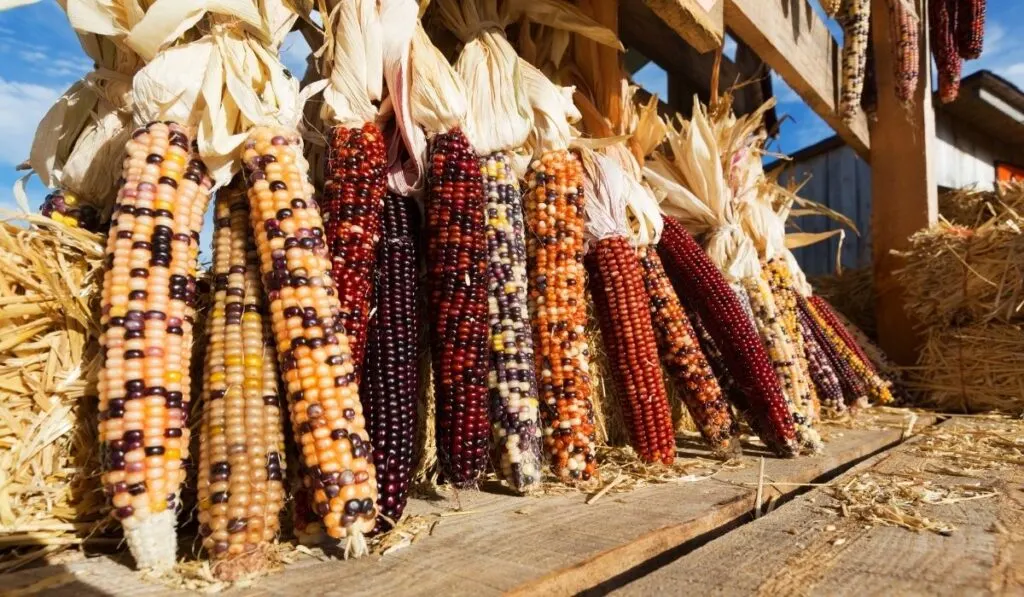
2. Flint Corn
Flint corn (Indian corn or calico corn) has a kernel that is hard and smooth with varying colors. It is usually grown in dry climates where sweet varieties cannot thrive.
It has a hard, shiny exterior that protects the soft inner endosperm. Flint corn gets its name from it being as hard as flint.
Unlike dent corn, flint corn has little starch. It is grown in many countries, including the USA and Mexico. Many people use flint corn for ornamental purposes.
Uses of Flint Corn
- It is mostly used in presenting food dishes and in decorating offerings.
- Used in making semolina, gruel, polenta, and pinole.
- Used in making breakfast cereals.
- Used in making high-quality animal feed.
Flint Corn Characteristics
- Flint corn has a hard exterior to protect the kernels from rodents, insects, and other pests.
- It has a shiny exterior.
- It comes in black, white, and in multi-colors.
3. Pod Corn
Pod corn looks different from other types since the glume (leaflike parts) covers each kernel. It’s the only kind of corn with leaves around each kernel.
Pod Corn Uses
- It has a religious significance to some native American tribes.
- It is used for ornamental purposes.
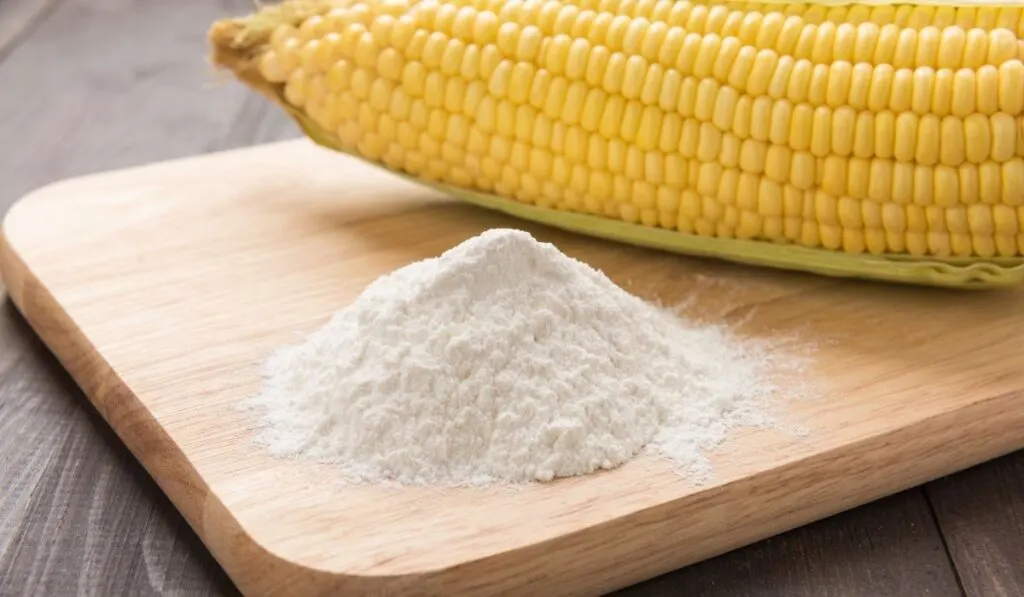
4. Flour Corn
Flour corn has a thin pericarp and a soft starchy endosperm. The Aztec and the Inca used to eat it; flour corn kernels were found in their graves. You will find flour corn mostly in South America, the USA, and South Africa.
Flour Corn Uses
Flour corn, as the name suggests, is grown to make flour. When the kernels are dry, you can grind them to produce flour.
The flour is used in the making of:
- Pancakes
- Cornbread
- Muffins
- Polenta
- Tortillas
- Gluten-free bread
Flour Corn Characteristics
- It can be white or yellow, depending on the corn variety you use.
- When you grind flour corn, you get a smooth, fine texture that is more like wheat flour.

5. Sweet Corn
If you enjoy eating sweet corn, then part of the reason is that the kernel is harvested when the ears are still in the milk stage.
The milk stage is when the ears are not dry or mature. The sweetness in the corn is due to a naturally occurring recessive mutation in the genes responsible for controlling the conversion of sugar to starch in the corn kernel’s endosperm.
It is best to harvest sweet corn when it is in the milk stage (unlike field corn, where you wait for it to mature (dent stage) before harvesting). The corn is more like a vegetable and not a grain in the milk stage.
The maturation process of sweet corn involves the conversion of sugar to starch.
Sweet corn doesn’t store well and thus is best eaten fresh before the kernels become hard and starchy. Sweet corn is sweet, and as such, it is rarely used in making industrial products, livestock feeds, or flour.
Sweet corn has high fiber content and is thus good in aiding digestion. The hybridization of sweet corn has seen the rise of even sweeter varieties.
Sweet Corn Uses
- It is eaten on the cob, as a vegetable, as side dishes, and added to other dishes.
Sweet Corn Characteristics
- Can be white, yellow, or bicolor
- Has high fiber
- Has high sugar content
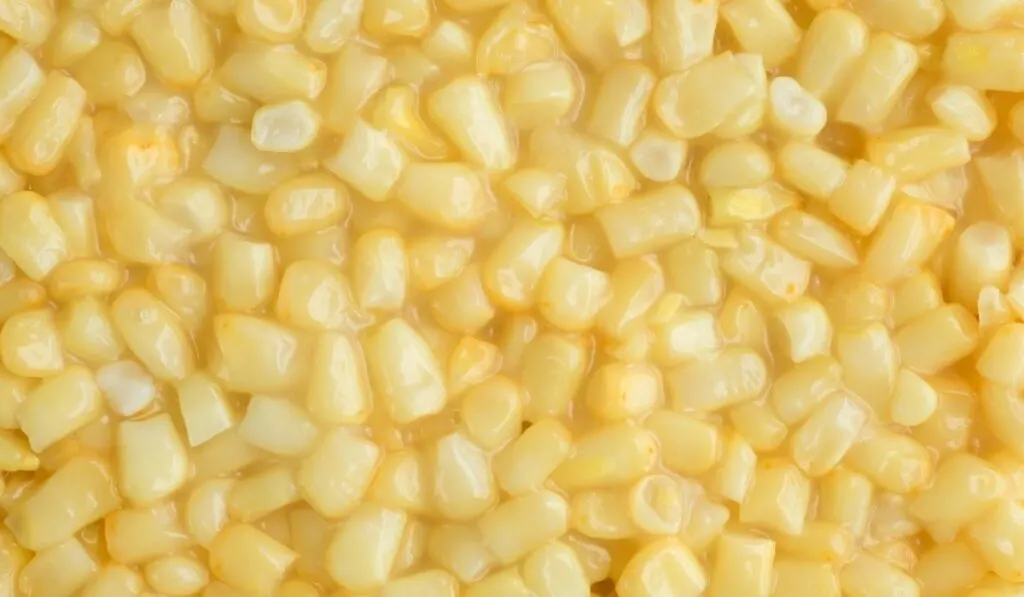
6. Shoepeg Corn
Shoepeg corn (country gentleman corn) resembles the wooden pegs that shoemakers used to attach soles to the upper part of a shoe. It is popular in the southern parts of the USA and is mostly available as canned corn than fresh corn.
Shoepeg Corn Uses
- Used in making salads
- Used in corn dishes
Shoepeg Corn Characteristics
- Kernels are small and narrow
- White in color
- Slight milky flavor
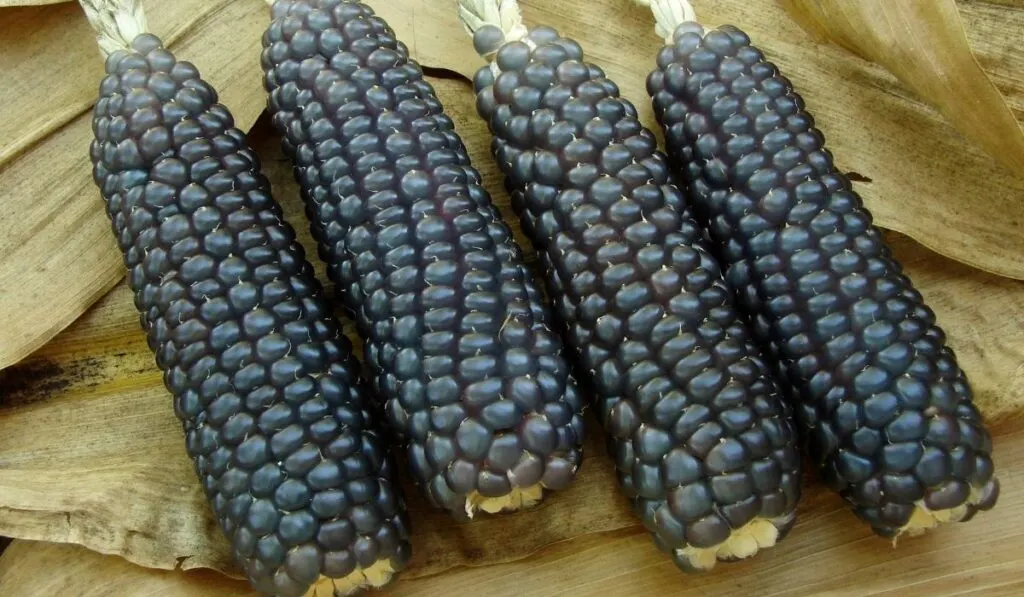
7. Blue Corn
Blue corn, also known as purple maize or Hopi maize, is a type of corn that has been cultivated for hundreds of years by the Hopi tribe (Pueblo Indians) in the southern parts of America.
Blue corn is closely related to flint corn and is the main type of corn used to make tlacoyo. It gets its rich color from a high concentration of anthocyanins (natural plant dye).
Blue Corn Uses
- Used in making Southwestern dishes of tortillas and cereal
- Used commercially in making products such as blue corn chips and blue corn pancake mix
Blue Corn Characteristics
- Has a bluish color
- Has a sweet and nutty taste
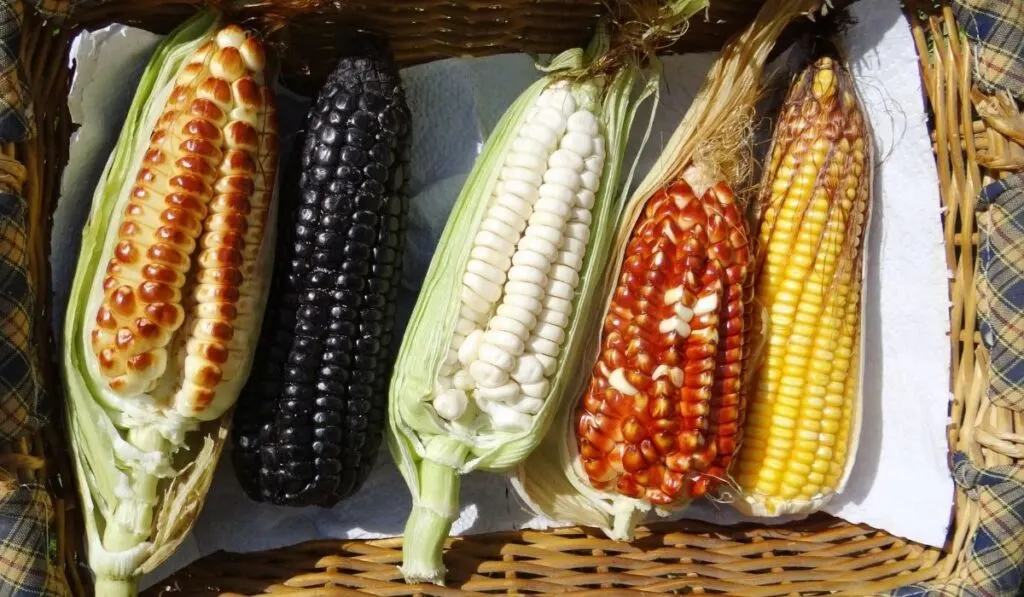
8. Peruvian Corn
Peruvian corn or Choclo is a corn variety that is mostly found in Central America and South America. It has a sweet taste but is not too sweet. Peruvians boil this corn and eat it from the cob with fresh cheese as choclo peruano.
Peruvian Corn Uses
- Colored Peruvian corn is best for boiling and roasting.
- The kernels are ground and mixed with chowders, soups, and stock.
- Used in making corn pies.
- Used in making tamales.
Peruvian Corn Characteristics
- The kernels are gigantic compared to other corn types.
- The stalks grow up to 18 feet.
- It matures late, taking around 120 –150 days.
- It is bland to mildly sweet.
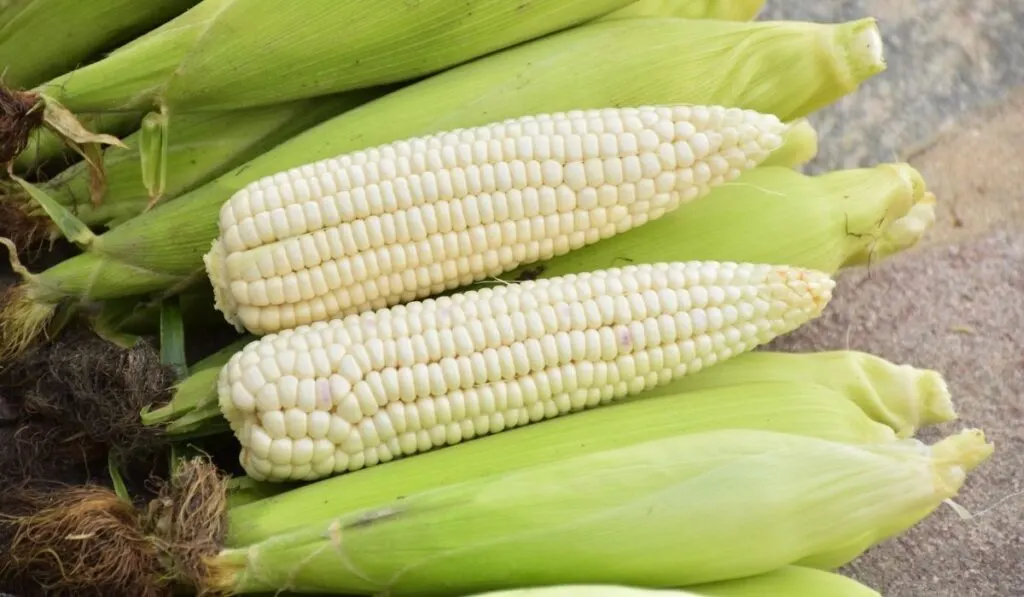
9. White Corn
White corn has a white to cream-colored surface with a white interior. It has a mild flavor that is sweet and nutty.
If they are harvested before drying out, white corn kernels are tender with a juicy, crisp consistency. As the kernels dry, the sugar content transforms into starch.
You will find white corn on almost every continent.
White Corn Uses
- Used for making oil
- Used as a food sweetener
- Ground into corn flour for making baked goods, tortillas, corn chips, and cereals
- Used as a crisping agent
- Can be boiled, grilled, or roasted
White Corn Characteristics
- The kernels are white.
- They have a subtle taste compared to sweet corn.
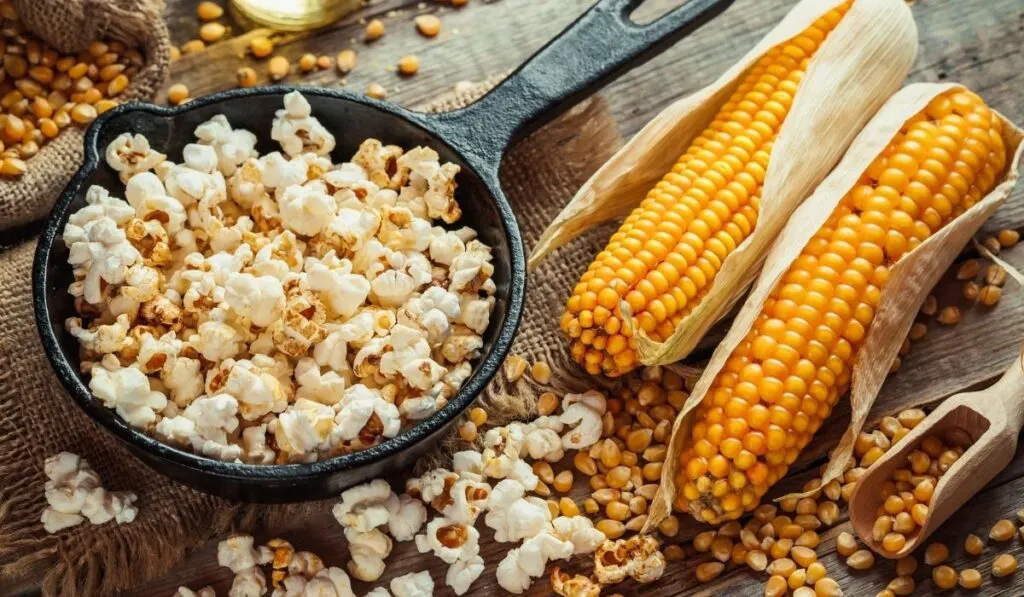
10. Popping Corn (Popcorn)
Popping corn (Popcorn) is a type of corn used to make the snack that many enjoy eating.
Popcorn has a small corn kernel that bursts open and puffs up when heated. It is made up of four basic components: hull, endosperm, germ, and tip cap.
The hull is the hard protective covering of the kernel. As the moisture inside the kernel heats up, steam builds up, and pressure increases until the hull ruptures and allows the endosperm to “pop” and expand from its original size.
Popcorn is grown in Illinois, Indiana, Michigan, Kentucky, Ohio, Nebraska, and Missouri. The popcorn seeds are planted each spring when the soil has warmed up to give the seeds a better chance to germinate and grow successfully.
Popping Corn Uses
- Making popcorn
Popping Corn Characteristics
- The kernel is dry on the stalk.
- It has less sugar.

What are the Benefits of Eating Corn?
Source of Fiber
Corn or maize is a whole grain, so it contains a lot of fiber, which helps you feel full for a longer time.
The dietary fiber in corn also alleviates constipation by softening stools, making the elimination of waste easy. Fiber also adds bulk to stools, thus reducing the chances of diarrhea and irritable bowel syndrome.
Source of Essential Minerals
Corn contains minerals like selenium that are rare in other foods. It also has phosphorus, which helps keep bones healthy, ensure the kidney functions properly, and regulate normal growth.
Corn also has magnesium, which is essential in maintaining a normal heart rate and keeping bone density at an optimal level.
Good for the Heart
Consuming corn-husk oil is beneficial for your heart as it lowers the absorption of bad cholesterol in your body. The vitamin C found in corn helps to ward off heart diseases and cancer.
Good for the Eyes and Skin
Corn has vitamin C, which is an antioxidant that protects your cells from damage. Yellow corn has carotenoids lutein and zeaxanthin, which help prevent cataracts from forming in the eyes.
Helps Manage Diabetes
Consuming corn kernels can help you manage type 2 diabetes. The phytochemicals in corn help regulate the absorption and release of insulin in your body, which can reduce spikes and drops in sugar levels. This can help you maintain a healthy lifestyle if you are diabetic.
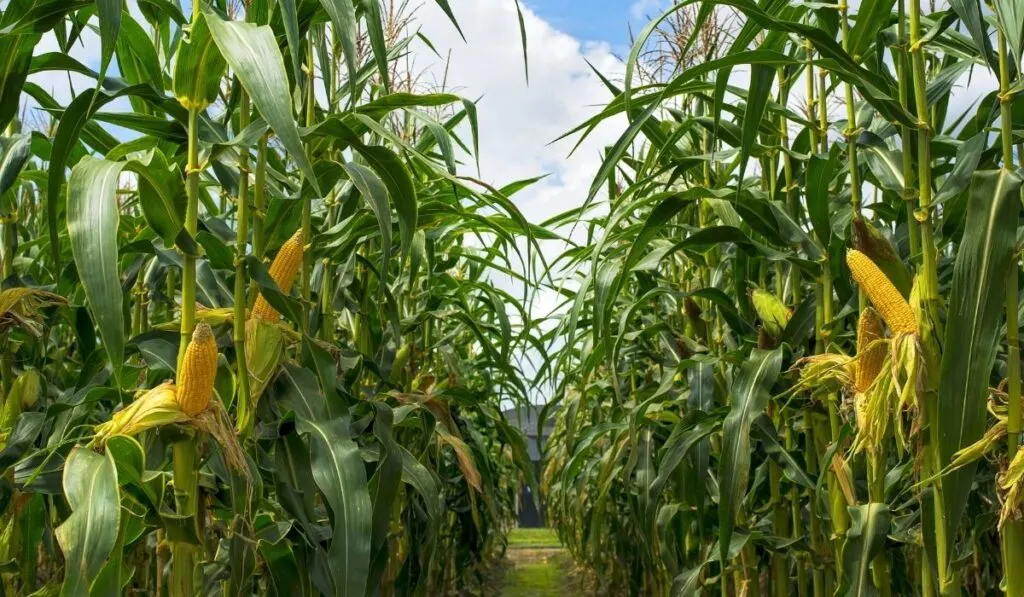
Frequently Asked Questions (FAQs) About Corn
- What exactly is corn?
- How are field corn (dent corn) and sweet corn different?
- What are the side effects of corn?
- What kind of corn is used in food?
What Exactly is Corn?
Corn is a cereal grain that’s a member of the grass family. Grains are edible seeds that grow on grasses.
Corn plants have long stalks with leaves at the top and ears at the bottom. Each ear has kernels arranged in rows along its length. Kernels come in colors such as white, yellow, and purple.
How Are Field Corn (Dent Corn) and Sweet Corn Different?
Sweet corn is grown to be eaten when ripe, while field or dent corn is grown primarily for animal feed, ethanol, and high fructose corn syrup.
Sweet corn kernels are picked when they are immature, and the water inside the kernel remains very high. Sweet corn kernels are soft and delicately sweet, while the kernels of field corn have a hard, starchy texture.
What Are the Side Effects of Corn?
If you eat too much corn, you may develop digestive problems. Phytic acid contained in the corn also prevents the absorption of minerals such as zinc and iron.
What Kind of Corn is Used for Food?
For eating fresh corn, sweet corn is the best choice. When selecting sweet corn, look for husks that are green and closely wrapped around the ear, silks that are brown and moist, and kernels that are plump and milky when you puncture them.
Eat sweet corn as soon as you harvest because it quickly loses its sweetness as the sugar converts to starch.
Key Takeaways
Corn is a versatile crop that is a good source of energy and is rich in fiber, vitamins, and minerals.
We get energy from the calories in corn. The carbohydrates present in corn are very easy to digest and provide instant energy to the body. Corn is also rich in fiber, which helps the digestive system, controls cholesterol levels, and reduces the risk of heart attacks and strokes.
You can use corn as an ingredient in soups and side dishes. For desserts, you can use corn flour, corn syrup, and cornstarch. Even animals consume corn in their animal feed!
I think you can agree that corn is a superfood that you should strive to include in your diet.
Resources
- https://en.wikipedia.org/wiki/Dent_corn
- https://www.ams.usda.gov/book/yellow-corn.
- https://www.sciencedirect.com/topics/agricultural-and-biological-sciences/dent-corn
- https://www.webmd.com/food-recipes/corn-health-benefits
- https://www.springhausagro.com/post/characteristics-and-uses-of-flint-corn
- https://specialtyproduce.com/produce/White_Corn_501.php
- https://www.webmd.com/food-recipes/corn-health-benefits.
